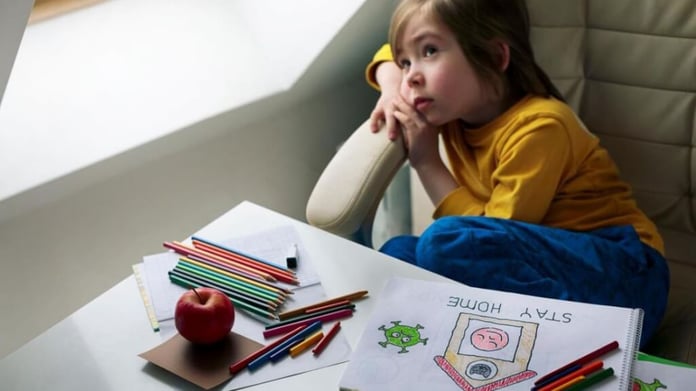COVID-19 cannot be seen with the human eye, but one of the most noticeable signs of the epidemic is masked people. After several weeks of conflicting government masking protocols, the U.S. Centers for Disease Control and Prevention (CDC) in early April recommended that people wear non-surgical fabric masks in public places. In some cities, such as Texas Laredo, even those who go into a store or public transport without a mask are fined, preschool consultant Rachel Katz and research fellow at the Universal Education Center Helen Shwe Hadani for Brookings Analytical Center write .
They say, as more and more people cover their faces in public, reading human emotions is becoming increasingly difficult. Although this may not cause problems for adults, young children seek emotional signals from caregivers to interpret new or potentially threatening situations , experts warn. That is, children rely on the expression on the face of their caregiver and tone of voice to regulate their reaction to people and new situations for them. The development of such emotional communication is called “social attachment”, it occurs between infancy and early preschool age.
How psychologists learn social skills
Experts suggest the following situation: a curious baby Ruby crawls to the oven and is about to touch her, looks at her mother and sees her worried expression on her face. Fortunately, Ruby is unlikely to touch the oven, because she turned to her mother for tips when she wanted to touch the oven.
Researchers have studied the social skills of children who are just starting to crawl using a large Plexiglass table with a checkered pattern that visually mimics a cliff. Its surface is virtually uninterrupted and completely safe to crawl. The child is placed on one side of the table, and the mother is on the other side with a funny toy. Mother specifically smiles or makes a worried face. In most cases, when children see a smile, they crawl along a cliff, but if they see a frightened face, they prefer not to cross the visual cliff.
Help the children read the emotions behind the masks
Experts ask how during a pandemic we can ensure that children form healthy interpretations of the world if one of the most expressive parts of the body is masked?
Rachel Katz struggled with this problem during the SARS epidemic (this is another coronavirus) in 2003 when she lived in Hong Kong with two young children. Even before the epidemic, her daughter had an increased sense of danger for a stranger. Her daughter was very worried when she did not see her mother.
“ As she developed social skills, her surroundings suddenly changed. Nearly 90 percent of the people she tried to recognize were hidden behind masks. Including my face, ” Katz writes.
The experts offer parents and loved ones a few games and strategies for a pandemic that can help children understand that a person with a good expression is still behind the mask:
– In a familiar place, show the child what a mask is. For example, at home, before taking the child out into the street – into the world of closed faces. Trying new things in a comfortable and safe environment for your family will give children the opportunity to go beyond the everyday and ordinary things.
– First, show the mask to the child, then put it on your face. Explain to your child that you will wear a mask when you are on the street, where other people will wear them. By helping your child anticipate future events, he will feel safe and calm.
– Cover your mouth with a mask, and then remove it, showing a smile. Do this several times. Explain to your child that you will smile even if he does not see your face.
– Play “guess my facial expression.” Ask your child to keep an eye on your eyes and eyebrows. Try to make them as expressive as your mouth (think over the term “smiling eyes”). Ask your child to guess how you feel by the expression of your eyes and eyebrows. Then you can take off the mask and show how the expression of the eyes matches the mouth.
– Talk to the child through the mask. The mask will muffle your voice, so it’s useful to adjust your own volume so that the child can hear you.
If covering the face to prevent the spread of infectious viruses is the new norm, it is important to help young children understand how to interpret faces behind masks. This is important to support their socio-emotional development, experts warn.


